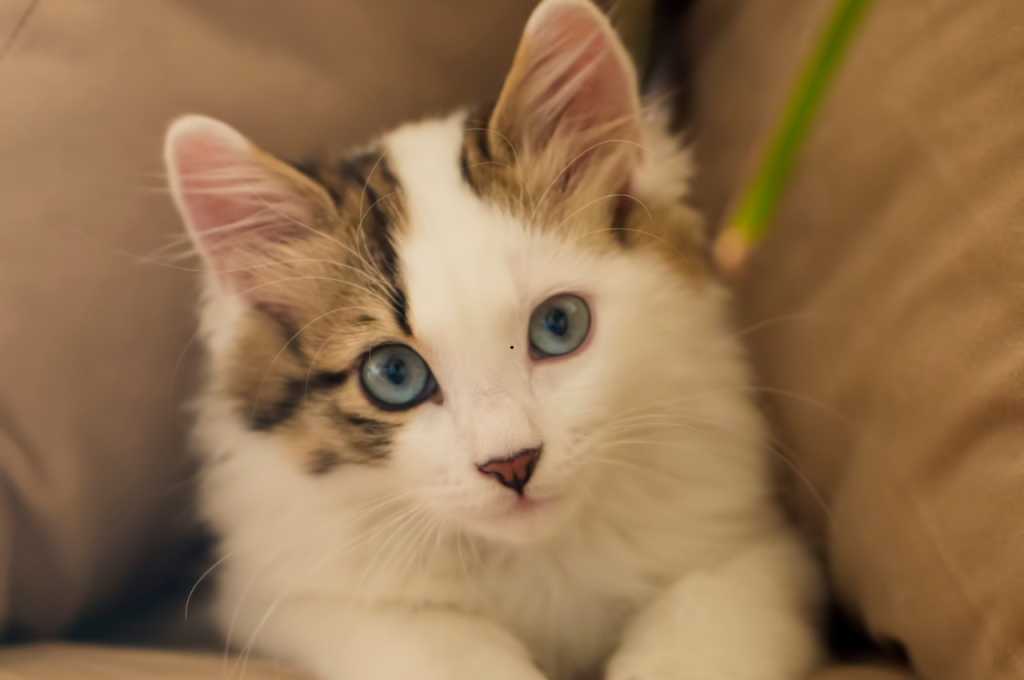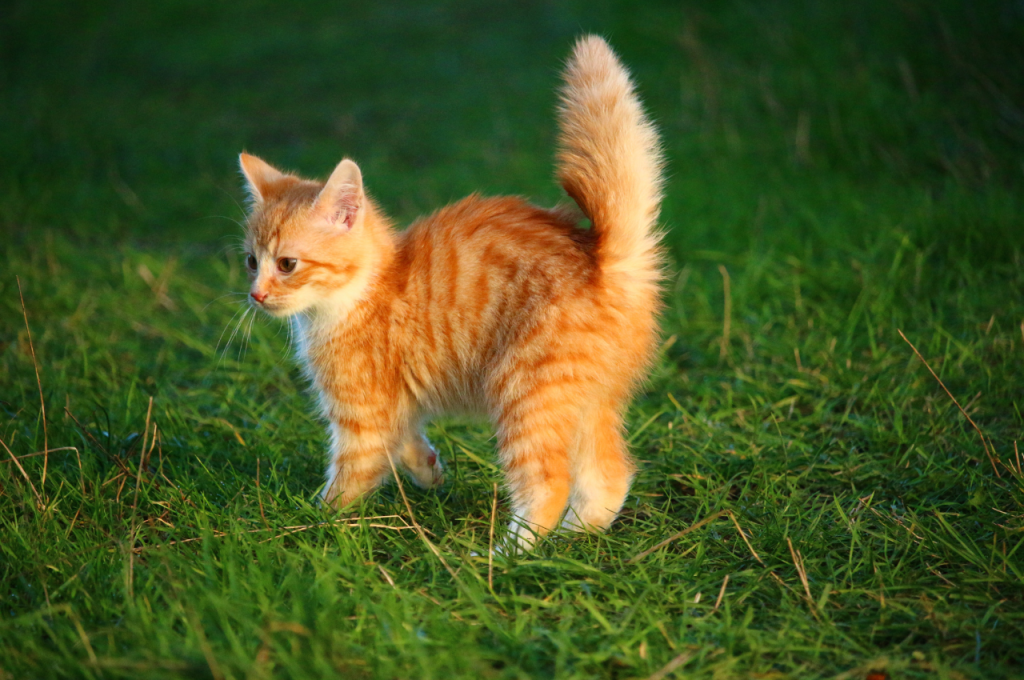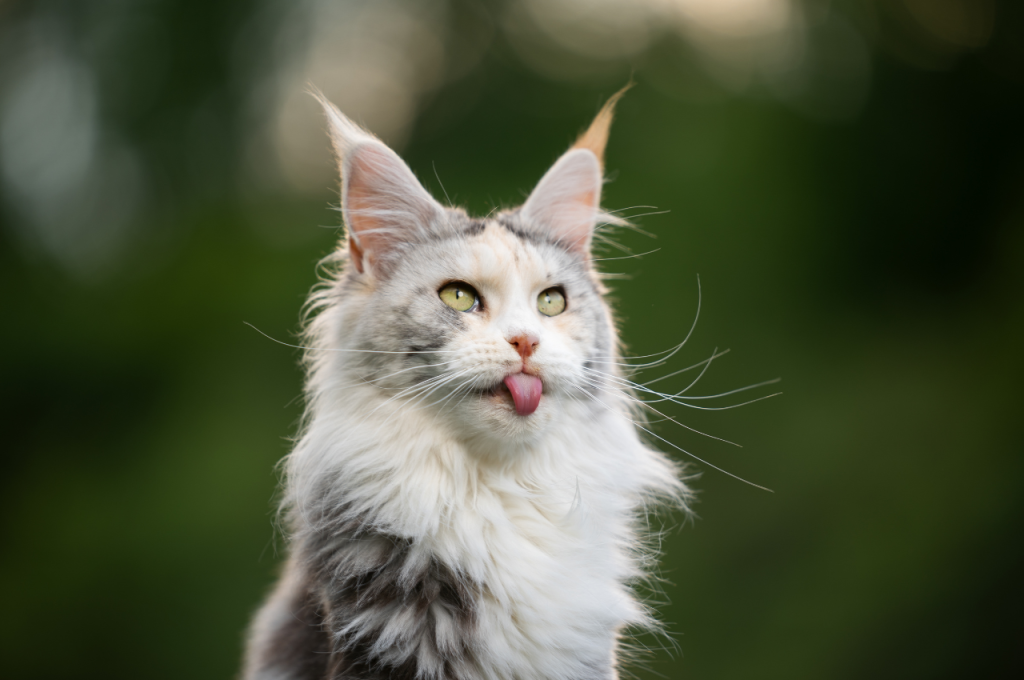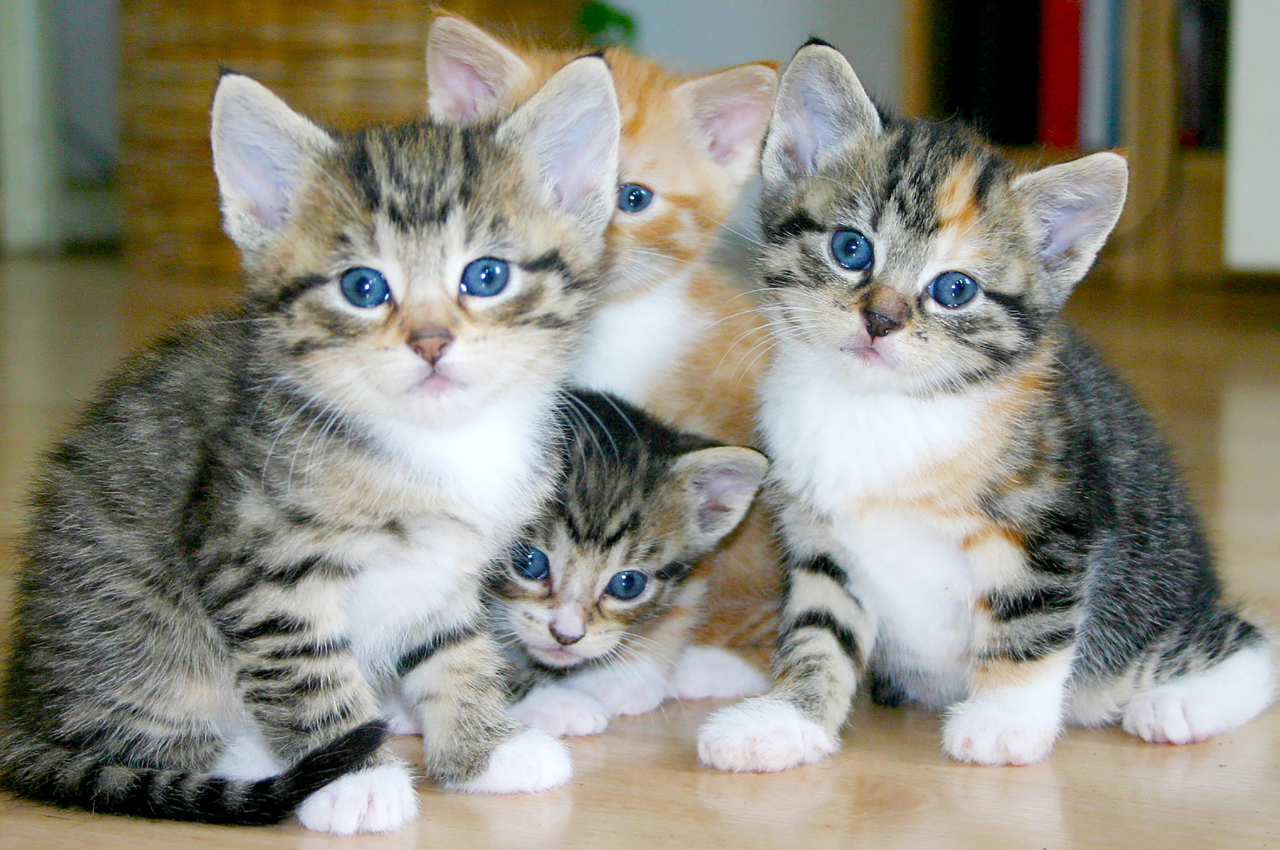There are various types of cats, including Persian, Siamese, Maine Coon, and Bengal. Each breed has unique characteristics.
Cats are popular pets due to their playful nature and independent personalities. From long-haired to short-haired breeds, there is a cat for every preference. Whether you prefer a talkative Siamese or a fluffy Persian, the diversity in cat breeds offers something for everyone. Understanding the different types of cats can help you choose the perfect feline companion for your home. Consider factors such as grooming needs, temperament, and activity levels when selecting a cat breed. In this blog, we will explore the characteristics of various cat breeds and help you find the ideal match for your lifestyle.
Introduction to Feline Diversity
Explore the fascinating world of feline diversity and discover the various types of cats. From the sleek Siamese to the fluffy Maine Coon, each breed boasts its own unique characteristics and personality traits. Whether you’re drawn to the exotic Bengal or the affectionate Ragdoll, there’s a cat to suit every preference and lifestyle.

The Allure of Cats
Cats have captivated human hearts for centuries with their mysterious and enchanting nature. These beautiful creatures, known for their agility, independence, and elegance, come in various shapes, sizes, and colors. From the regal Persian cat to the playful Siamese, the diversity within the feline world is truly remarkable. Whether you’re a devoted cat lover or simply intrigued by these fascinating animals, this guide will introduce you to the different types of cats and help you gain a deeper understanding of their unique characteristics.
Purpose of The Guide
The purpose of this guide is to provide you with a comprehensive overview of the various types of cats that exist. Whether you’re considering getting a cat as a pet or are simply interested in learning more about these magnificent creatures, this guide will serve as a valuable resource. By exploring the different breeds, characteristics, and traits of cats, you will be able to make informed decisions about which type of cat best suits your lifestyle and preferences.
Additionally, this guide aims to celebrate the diversity and beauty of cats, shedding light on the lesser-known breeds and highlighting the distinctive qualities that make each one special. Now, let’s delve into the world of feline diversity and discover the many types of cats that exist. Whether you prefer a long-haired beauty to cuddle with or an energetic and playful companion, there’s a cat out there that will steal your heart. Let’s embark on this journey together and explore the fascinating world of cats!
Historical Origins of Domestic Cats
Domestic cats have a rich history, with evidence of their existence dating back to ancient Egypt. There are various types of cats, including the Siamese, Persian, and Maine Coon, each with distinct physical and behavioral characteristics. Understanding the different types of cats can help owners choose the best fit for their lifestyle.
From Wild to Domestic
Cats are one of the most popular pets in the world, but their origins are shrouded in mystery. Domestic cats are believed to have evolved from their wild ancestors, the African Wildcat, around 10,000 years ago in the Near East. The domestication of cats was a gradual process, and it is believed that cats began living with humans to control rodent populations.
Evolutionary Journey
The evolutionary journey of cats is fascinating. The earliest known ancestor of modern-day cats was the proailurus, a small, tree-climbing animal that lived around 25 million years ago. Over time, cats evolved into various species, each adapted to their environment. For example, the Scottish Fold is a breed that evolved to survive in the cold and wet climate of Scotland.
Types of Domestic Cats
Today, there are over 100 different breeds of domestic cats, each with its own unique characteristics. Some of the most popular breeds include the Siamese, Persian, Maine Coon, and Bengal. Each breed has its own personality traits, physical characteristics, and grooming needs. For example, the Siamese is known for being vocal and intelligent, while the Persian has long, luxurious fur that requires daily grooming.
Understanding the historical origins of domestic cats is important in appreciating these beloved pets. From their wild ancestors to the diverse breeds we have today, cats have come a long way in their evolutionary journey.
Classifying Cats By Breed
Cats come in various breeds, each with unique traits and characteristics. Some popular breeds include Siamese, Persian, Maine Coon, and British Shorthair. Knowing the different types of cats can help you choose the perfect feline companion that fits your lifestyle and personality.
Cats are known for their distinctive personalities and looks. They come in different colors, sizes, and patterns. One way to classify cats is by breed. There are over a hundred recognized cat breeds worldwide, and each breed has its own unique characteristics that set it apart from others. In this post, we’ll explore the different breed categories and some of the most popular breeds in each category.
Breed Categories
Cats are classified into several breed categories based on their physical features, coat type, and behavior. Here are the five main breed categories:
- Domestic Cats: These are cats that do not belong to any specific breed. They come in a variety of coat types, colors, and patterns.
- Short-haired Cats: These cats have a short, sleek coat that requires minimal grooming.
- Long-haired Cats: These cats have a long, thick coat that requires regular grooming to prevent matting.
- Hairless Cats: These cats have little to no hair and require minimal grooming.
- Wild Cats: These are cats that are not fully domesticated and have traits similar to their wild ancestors.
Popular Breeds at a Glance
Now that we know the different breed categories let’s take a look at some of the most popular breeds in each category.
- Domestic Cats: Domestic Shorthair and Domestic Longhair
- Short-haired Cats: Siamese and British Shorthair
- Long-haired Cats: Persian and Maine Coon
- Hairless Cats: Sphynx and Peterbald
- Wild Cats: Bengal and Savannah
By classifying cats by breed, we can better understand their unique characteristics and traits. Whether you prefer a domestic shorthair or a wild Bengal, there’s a cat breed out there for everyone.
Physical Characteristics of Cat Breeds
When it comes to the physical characteristics of cat breeds, there are several distinctive features that set them apart. From coat types and colors to unique physical attributes, each breed has its own set of defining characteristics.

Coat Types and Colors
Cats come in a variety of coat types and colors, adding to their individuality. Some common coat types include short-haired, long-haired, curly-haired, and hairless. The colors can range from solid, bi-color, tri-color, tabby, tortoiseshell, and calico. Each combination creates a unique and beautiful appearance for different breeds.
Distinctive Features
Aside from their coat types and colors, cat breeds also have distinctive physical features that make them easily identifiable. These features can include ear shape, eye color, facial structure, and body size. For example, the Siamese breed is known for its striking blue almond-shaped eyes, while the Scottish Fold has distinctive folded ears.
Behavioral Traits Across Cat Types
Cats have diverse temperaments, with some being affectionate and others more independent. The breed and individual personality greatly influence a cat’s temperament. Cat breeds vary in their activity levels, from highly energetic breeds that require lots of playtime to laid-back breeds that prefer lounging around.
Cats with Unique Needs
When it comes to cats, each breed has its own unique needs and characteristics. Some cats require special care due to specific health issues, while others may be better suited for individuals with allergies. Understanding the different types of cats and their unique requirements is essential for providing the best possible care and environment for these special felines.
Special Care Breeds
Certain breeds of cats have specific health needs that require extra attention from their owners. For example, flat-faced breeds like Persians and Himalayas may experience breathing difficulties due to their facial structure. Owners of these breeds should be mindful of respiratory issues and provide regular veterinary check-ups to monitor their respiratory health. Additionally, breeds such as the Sphynx may require special skincare due to their lack of fur, necessitating regular baths and moisturizing treatments to keep their skin healthy.
Hypoallergenic Options
For individuals with allergies to cats, hypoallergenic breeds can offer a solution. Breeds such as the Siberian and Balinese are known for producing lower levels of the allergen Fel d 1, making them suitable choices for allergy sufferers. These breeds require regular grooming to minimize dander and allergens in the environment, providing a more comfortable living situation for both the cat and its owner.
Hybrid and Designer Cats
Hybrid and designer cats are a fascinating category of felines that have gained popularity in recent years. These cats are the result of intentional crossbreeding between two different cat breeds, resulting in unique and eye-catching physical characteristics. Let’s delve into the world of hybrid and designer cats to explore the rise of these breeds, the controversies surrounding them, and important considerations for potential owners.
The Rise of Hybrids
Hybrid cats have become increasingly popular due to their distinctive appearances and the allure of owning a truly one-of-a-kind pet. These cats are the product of intentional crossbreeding between two established breeds, resulting in a striking combination of physical traits. Popular hybrid breeds include the Bengal cat, Savannah cat, and Chausie. Each of these hybrids exhibits a captivating blend of wild and domestic traits, making them highly sought after by cat enthusiasts.
Controversies and Considerations
While hybrid and designer cats captivate many with their unique appeal, controversies and considerations surround the breeding and ownership of these felines. Some critics argue that intentional crossbreeding can lead to health issues and behavioral challenges in hybrid cats. Additionally, the ethical considerations of creating hybrid breeds have sparked debates within the feline community. Prospective owners must carefully consider the responsibilities and potential challenges associated with caring for hybrid and designer cats, including the need for specialized care and attention due to their unique genetic makeup.
Caring for Different Cat Types
When it comes to caring for different cat types, it’s essential to understand their specific nutritional needs, health, and wellness requirements. Each cat breed has distinct characteristics that influence their care. Let’s explore how to provide the best care for various types of cats.
Nutritional Needs
Nutrition plays a crucial role in the well-being of cats. Different cat types may have varying nutritional requirements. For instance, hairless breeds such as the Sphynx may need a diet higher in fat to compensate for their lack of fur. On the other hand, large breeds like the Maine Coon may require a diet tailored to support their bone and joint health.
Health and Wellness
Regular veterinary check-ups are essential for maintaining the health and wellness of all cat types. However, certain breeds may be prone to specific health issues. For example, brachycephalic breeds like the Persian may require extra attention to their respiratory health due to their facial structure. Understanding these breed-specific needs can help ensure a healthy and happy life for your feline companions.
Choosing The Right Cat for You
Lifestyle Compatibility
When choosing a cat, it’s important to consider your lifestyle and how well it aligns with the needs of different cat breeds. Some cats are more independent and low-maintenance, while others thrive on constant attention and play. Consider how much time you can dedicate to grooming, exercise, and overall care for your new feline friend.
Adoption Tips
Adopting a cat is a wonderful way to give a loving home to a pet in need. When considering adoption, visit local shelters and rescue organizations. Take the time to interact with the cats and observe their behavior. Look for a cat that matches your energy level and personality. Additionally, consider the age of the cat and any special needs they may have.
Conservation of Rare and Wild Cat Species
Conservation of rare and wild cat species encompasses a variety of feline types, each with unique characteristics. From the majestic tiger to the elusive snow leopard, these cats play a vital role in maintaining ecological balance and deserve our utmost protection and preservation efforts.

Endangered Breeds
Certain cat breeds are categorized as endangered due to declining populations and threats to their survival.
Conservation Efforts
Various organizations are dedicated to protecting and preserving rare and wild cat species through conservation efforts. Protecting endangered breeds and supporting conservation efforts is crucial to ensure the survival of rare and wild cat species.
Conclusion
Understanding the different types of cats is essential for any feline enthusiast. Whether you prefer fluffy Persians or energetic Siamese, each breed has unique characteristics. By learning about these breeds, you can better appreciate and care for your feline companions.
